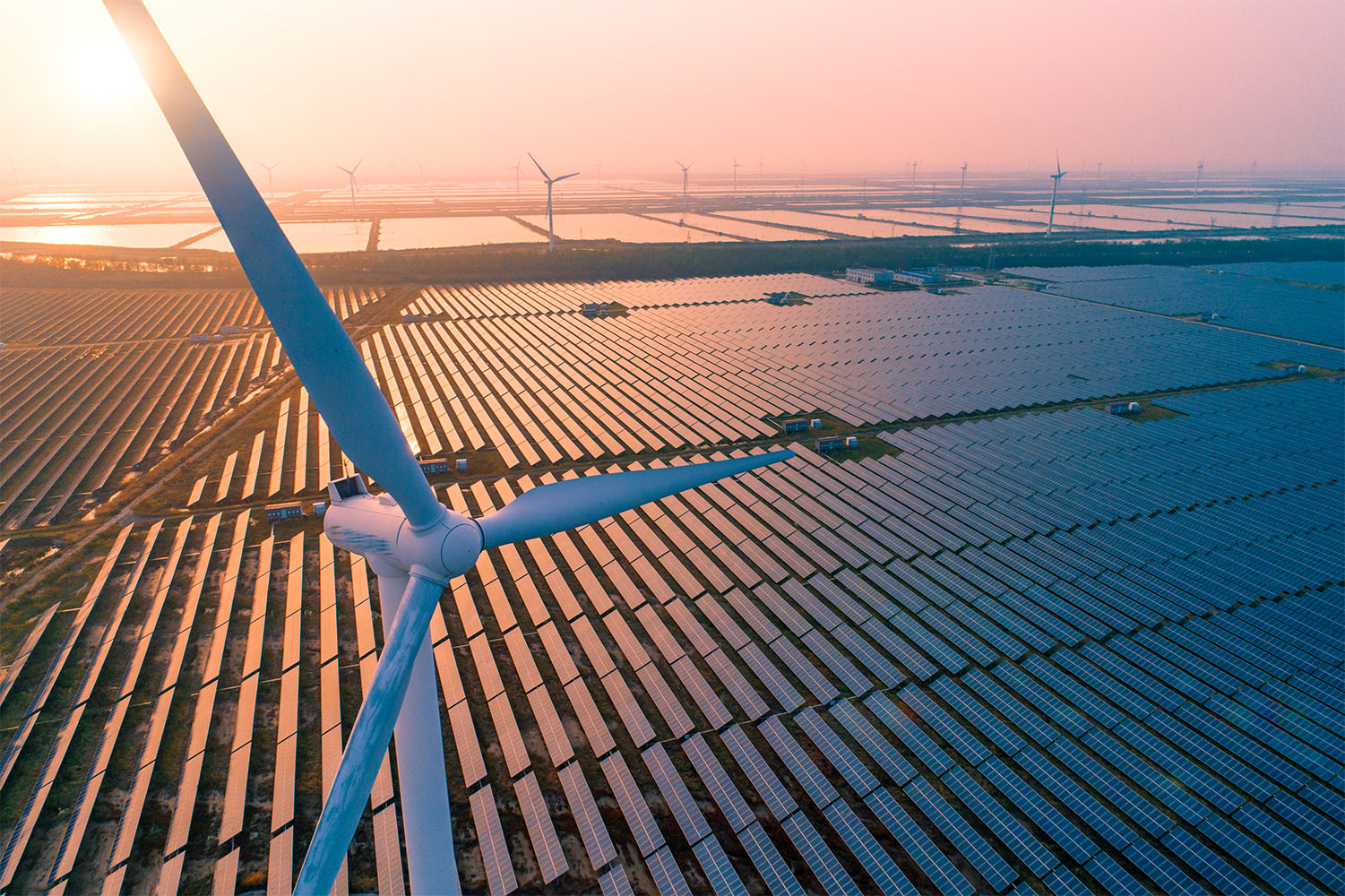Ageing renewable generation portfolios: why proactivity is key
Published on 2nd November 2023
What are the common issues operators come across when grappling with an ageing fleet and how can this be managed?

The results of the Contract for Difference Allocation Round 5 show a great appetite for the continued development of new onshore solar and wind projects. This support provides clients with a strong platform to push forward with development, and we continue to support clients in the successful delivery of these live projects.
However, at the other end of the spectrum, many existing projects are getting old. The UK’s total solar capacity stands at 15 GW, of which over 5GW is from assets that are over 10 years old, according to Solar Energy UK. It is forecast that, by 2040, around 4GW of the UK's onshore wind fleet will be repowered projects.
Current operators are grappling with the inevitable consequence of an ageing fleet of assets: underperformance, degradation and, ultimately, failure. Here are some key considerations on how this can be managed.
Prevent the failure of key components
Failure of major components, including inverters, transformers and cabling is unfortunately all too common as sites age, some more gracefully than others. The cause of this issue is often poor quality components that fail to last their expected lifetime or inadequate operation and maintenance, allowing minor defects to develop exponentially until the asset fails.
When it comes to ageing assets, much like healthcare, "prevention is better than cure". There are a number of approaches that can help achieve this. to do this:
- Ensure the appointed operation and maintenance (O&M) contractor is being proactive in assessing and determining likely failures. Make proactive use of contractual rights in O&M contracts to ensure problems are identified early, before they become critical and a plan is put in place to combat them. In turn, this mitigates the risk of catastrophic failure or losses during peak generation season.
- Proactive notification of defects, pushing contractors to provide details of root cause and proposed solutions at the earliest opportunity. This enables the owner to more effectively manage programme and interface issues with distribution network operators and landowners to minimise downtime and any wider damage to the plant. Owners should also robustly enforce any contractual KPIs around reactive maintenance and remedying faults.
- Minimise potential component failures by stockpiling replacements across your portfolio (either of the same model or interchangeable). While there may be an initial financial outlay to create the extended inventory of "spare parts and components", this cost may quickly be recovered through generation during the period in which the plant would otherwise be underperforming.
- Harnessing the power of data to predict future problems and failures. This can be done by examining the performance of individuals site but also through data of relevant components on similar assets.
When confronted by component failure
Where a failure has already occurred, it is important to obtain details as to the root cause and then manage the risk of other components also failing. Important considerations will include:
- Do the components benefit from manufacturer warranties? If so, careful consideration will need to be given to its terms including around notification of claims, expiry of the warranty and recourse available. In particular on solar projects the terms are often written on a "repair, replace or refund" basis, at the discretion of the contractor. The dynamics of warranty claims have changed significantly in the last few years as a result of component availability and cost.
- Lead times and the availability of components. This has been particularly impacted by geopolitical issues, with long lead in times and the resulting plant downtime rendering warranty claims potentially unattractive.
- Cost increases. Due to the levels of inflation and demand, the cost of procuring a replacement component may mean refunding the original price makes more commercial sense for the warrantor, which leaves the operator out of pocket.
- Repowering. In light of these challenges, owners may want to consider the viability of repowering or upgrading components if there is a need for wholesale replacement.
- Contractual recourse. Operators and owners should carefully consider their rights under both the O&M contract when deciding how best to mitigate the impact and also under the EPC (engineering, procurement, and construction) contract in respect of defective components.
When failure is anticipated
A more challenging position occurs when defects are anticipated but have not yet manifested on site; for example, there is curtailment of turbines or degradation of modules, albeit not to a level that crosses a strict threshold constituting a "defect" under the O&M contract.
In this situation, a careful analysis of the point at which the "defect" arises under the relevant contract is crucial. For example, if a contractor's obligations only kick in following a failure to achieve a minimum performance measured over a defined period, does a failure in design or maintenance that means the plant cannot achieve this minimum performance give rise to a defect prior to the expiry of the measurement period?
Osborne Clarke comment
The analysis will turn on interpreting the express wording of the contract itself. Our recommendation is to proactively explore and enforce the rights in the contract at an early stage so as to put yourself in as strong a position as possible. This analysis should assist in gaining the attention of your O&M contractor and, failing that, enable an owner to exercise its rights of step in (or similar) as required.
In the event of defects and failures, consideration should be given to mitigation strategies as well as available recourse that might be available to offset against any generation losses.




